Qazvin Chehel Sotun
One of the significant constructions of the Safavid era and the sole surviving pavilion of …
Destination
Qazvin is a city with the most beautiful sky ever, a pure blue since it is frequently windy. It is famous for being along the Silk Road and having Alamut Castle nearby that belongs to Assassins. Qazvin is known as the capital of Iran’s calligraphy. So you can find beautiful pieces in various styles and also amazing classes on calligraphy there.
First and foremost, you must visit Caravanserai of Sa’d al-Saltaneh which is not just a remnant of an ancient caravanserai; Sa’d al-Saltaneh is a cultural, traditional, and industrial hub in Qazvin right now. You can enjoy the magnificent ad lovely architecture, local stores for buying souvenirs, and romantic cafes as well. Stroll around at Sabze Meydan which is the local shopping hub at Qazvin where people buy their everyday lives needs. Aminiha Hosseiniyeh, Qajar Bathhouse & Anthropology Museum, and Jameh Mosque of Qazvin are other sites not to miss.

Do not also miss on trekking and camping at Alamut Valley and Ovan Lake. Besides, try Gheime Nesar >which is tasty local food and Jouje Borosted is a famous fast-food of there. The delicious sweets like Baghlava, Nan Chai, and Paderazi in Qazvin also are worth trying.
A very unique and local souvenir of Ghazvin is Sang-e Pa which is a natural volcanic pumice stone for removing dead skin and callus from feet.
Except for the winter, all other seasons are perfect timing for visiting Qazvin. It has harsh winters since it is surrounded by mountain ranges.
![]() Bishkek, Kyrgyzstan
Bishkek, Kyrgyzstan
30-Day Iran Visa Delivered in 3 Days
The safe solution
The freedom to explore Iran
The fastest, most reliable & efficient
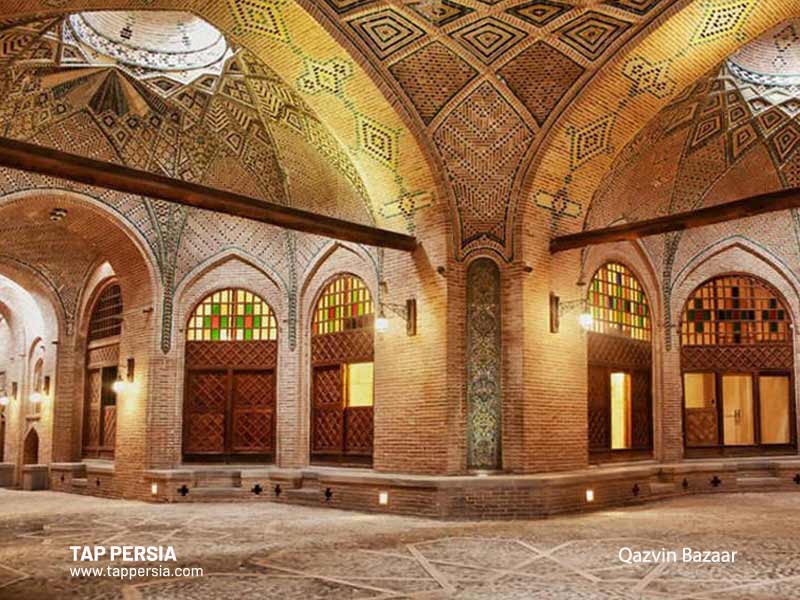 Qazvin Bazaar is one of the historical sights of the city. They built this bazaar during the Safavid era as the capital of this city. During the Qajar period, they developed the bazaar and added several caravanserais.
Qazvin Bazaar is one of the historical sights of the city. They built this bazaar during the Safavid era as the capital of this city. During the Qajar period, they developed the bazaar and added several caravanserais.
The most important parts of this bazaar are Al-Nabi Mosque, Sa’d al-Saltaneh Caravanserai, Vazir Serai, Haj Reza Serai, Razavi Serai, and many more. This historical monument has been on Iran’s National Heritage List since December 26, 1977.
The Prophet’s (Al-Nabi) Mosque in Qazvin is located on the south side of Imam Khomeini Street, in the direction of Qazvin Bazaar. They still hold congregational and Friday prayers there. However, tourists can also visit it. The area of Masjid al-Nabi is about 14,000 square meters. It has wide courtyards and naves, and its architecture is unique in its kind. They built this mosque during the Qajar period, by the order of Fath Ali Shah.
This historical monument has been on Iran’s National Heritage List since December 6, 1961,
Rafi Church dates back to the first Pahlavi period in Iran. You can find this church on Taleghani Street. It is located on the site of a school with the same name. This school has long been an educational and worship complex for Armenians living in Qazvin. The altar of this brick church is located on the east side.
In this church, in addition to the public ceremonies related to the Armenians, they hold special rituals, as well. These rituals are regarding Saint Mary that coincide with the Grape Festival in August (August). During which the Armenian cultural associations visit the church.
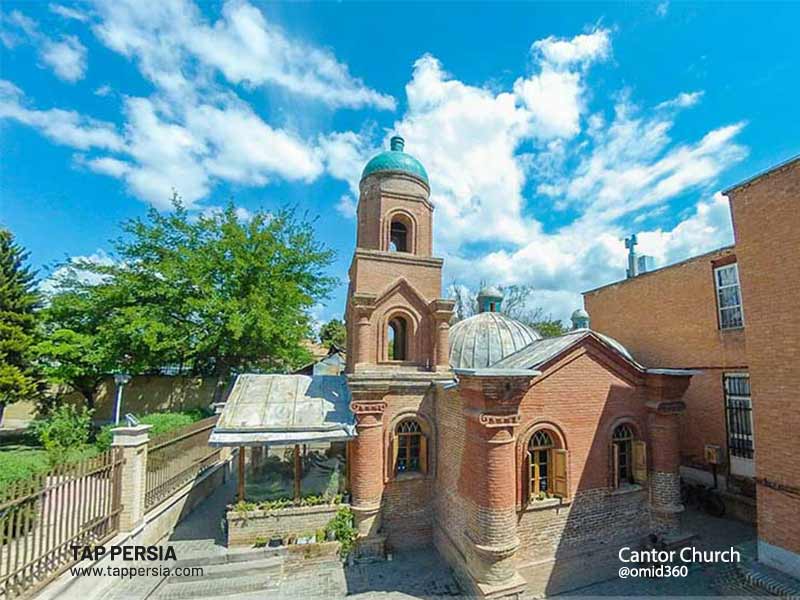
Russian church in Qazvin is also known as Cantor (or Kantur) Church. This building is the smallest Orthodox church in Iran and the third smallest church in the world. Kanto in Russian means headquarters or center. They built it during the occupation of Iran by the Russians during the Second World War. Some also call it the “Bell Tower”.
Upon entering the churchyard, you will see two tombstones, one belonging to a Russian pilot and the other to a Russian engineer who died in Iran. They say the owner of this building was Master Hossein (an architect), who later became known as Hossein Kantur.
People also call Qazvin Jameh Mosque, Atiq Grand Mosque, or Kabir Grand Mosque. Anyhow, it is one of the largest mosques in Iran. According to the narratives, it is the oldest mosque in Iran, as well. Originally, when they started building this mosque, it was on the remaining site of a fire temple from the Sassanid era. They constructed it in a four-Iwan-style mosque. During the Mongol invasion of Iran, they destroyed some parts of the Grand Mosque. But happily, they repaired it very soon.
This historical monument has been on Iran’s National Heritage List since December 6, 1961.
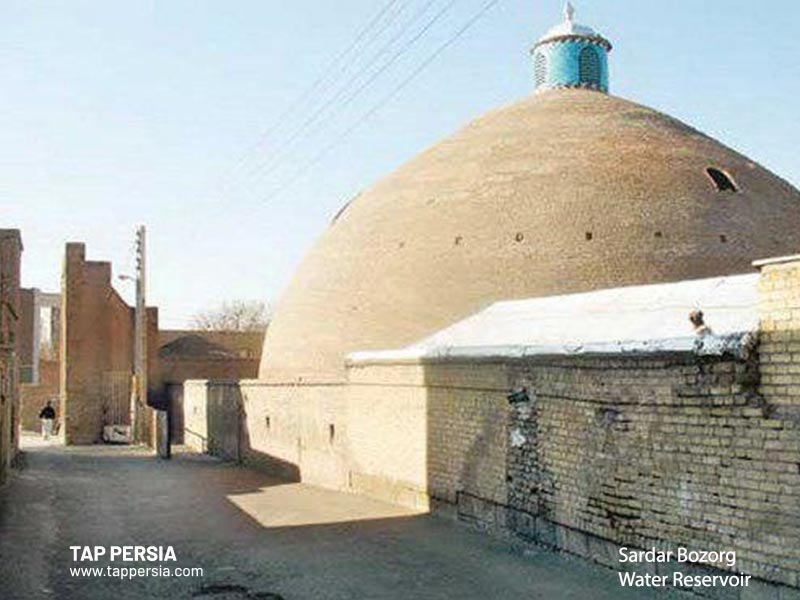 They built the Sardar Bozorg (General Commander) water reservoir in 1813 in the Rah-e-Rey neighborhood of Qazvin city. This well-known reservoir is the largest single-dome reservoir in Iran and even in the world. This building has a tall brick dome with skylights all around it.
They built the Sardar Bozorg (General Commander) water reservoir in 1813 in the Rah-e-Rey neighborhood of Qazvin city. This well-known reservoir is the largest single-dome reservoir in Iran and even in the world. This building has a tall brick dome with skylights all around it.
The two brothers who were the founders of constructing this reservoir were commanders of their time during Fath Ali Shah. That’s why they call it so.
This historical monument has been on Iran’s National Heritage List since September 29, 1976.
The Aminiha House or Hosseiniyeh is one of the beautiful and grand historical houses in the city. this charming house dates back to the Qajar period. Haj Mohammad Reza Amini, one of the merchants of Qazvin, built it in 1859.
This mansion has three halls and two courtyards (north and south). The halls are built parallel to each other, from east to west, and between two courtyards. The ceilings of the halls have awesome paintings, mirror works, wooden decorations, and so on. The water reservoir, basement, pantry, and warehouse are other parts of this mansion.
Sa’d al-Saltaneh Caravanserai is the largest indoor urban Serai in Iran. They built it during the Qajar period (late reign of Nasser al-Din Shah Qajar). Chaharsooq is the most valuable part of this building. The vertical intersection of two rows has created this beauty which has a large tiled dome on top of it. On the four sides of the dome, there are four semi-domes with decorations and skylights that make the space look bigger.
This house has an area of more than 6.2 hectares. Today, many parts of this house have been renovated and improved and are under the supervision of the Iran Cultural Heritage and Tourism Organization. 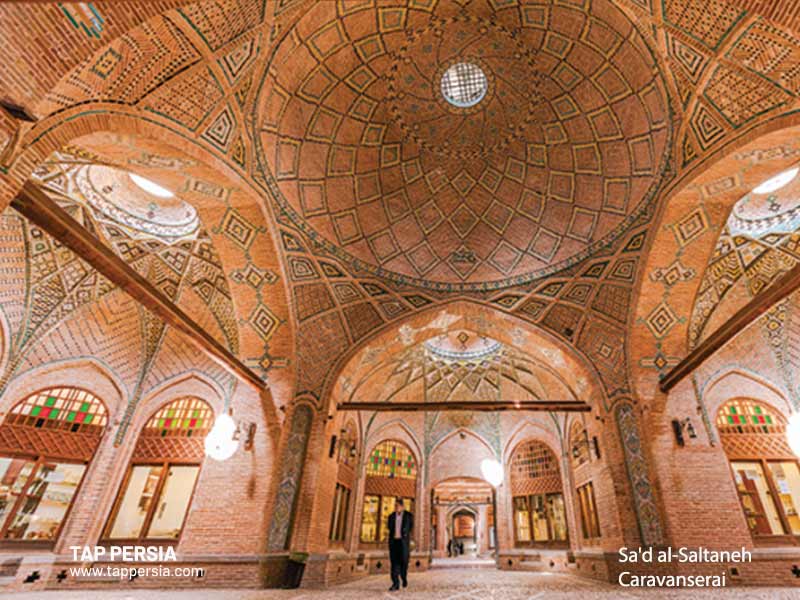
This historical Serai has been on Iran’s National Heritage List since August 1, 1978.
Alamut Castle is one of the tourist attractions of Qazvin and one of the most important historical castles in Iran. It is an ideal place for those interested in history and archeology. The fort was the seat of Hassan Sabah, the founder of the Ismaili and anti-Seljuk government in the 5th century AH.
In deed, he became famous for his military activities. Alamut Castle is not only a spectacular historical attraction but it has beautiful nature that attracts any tourist.
Imamzadeh Husseinwas the son of Imam Reza, who died in 817. It is one of the most important shrines and places of interest in Qazvin. And it has always been since the beginning. According to the narrations Imamzadeh Hussein died in this city on his way to Merv while crossing Qazvin. That’s why they buried him there.
Today the shrine is fascinating and the lighting at night is mesmerizing.
In fact, the entrance of Aali Qapo was the entrance of the Aali Qapo mansion in the past. Unfortunately, the mansion has been destroyed. This historical monument dates back to the Safavid period in 1545.
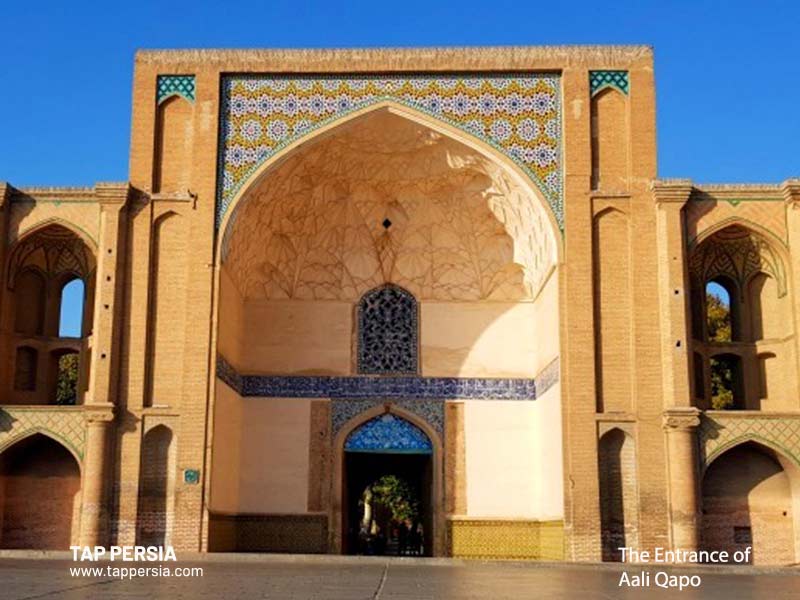 The mansion included a complex, Sa’adat Abad, which Aali Qapo entrance is currently the only standing part of the whole complex.
The mansion included a complex, Sa’adat Abad, which Aali Qapo entrance is currently the only standing part of the whole complex.
These days, before entering any city, we see a green sign by the roadside that greets us. But years ago, when people entered or left the city, they passed through enchanting gates. these gates were masterpieces of art and elegance.
In the old days, there were fences and gates around the city of Qazvin to keep it safe. In the middle of the third century AH, this city had seven gates through which people passed.
The number of gates in the Qajar period reached 9, which were connected by fences. One of these gates was Darb Kushk Gate which is still standing still.
Sepah Street is the first designed street in Iran, which was built during the Safavid period. It was the time Qazvin was the capital of the country. Today Iranians know this street as “the first modern street in Iran.” Today, this street is among the sights of Qazvin.
The architecture of Iranian towers was sometimes in the form of a cylindrical and independent near the walls of cities or castles. The city of Qazvin is a mirror of Iran’s history. It hots many valuable buildings representing the history of Iranian architecture.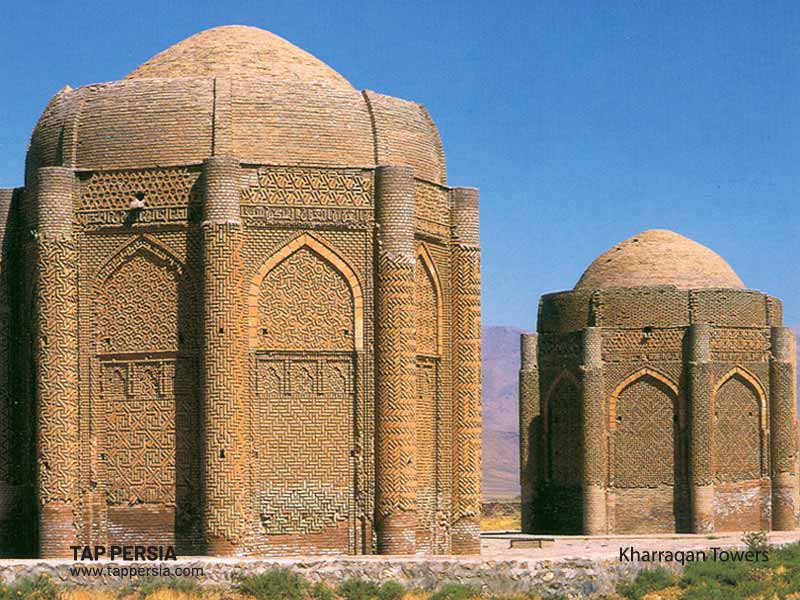
Kharqan towers are one of the sights of Qazvin, located one kilometer from the Hesar Armani village. You can find the towers in a large area, standing a short distance from each other. Apparently, they are similar in many ways. But the East Tower is older than the West one.
Qazvin religious schools have always had a special place in the religious and cultural history of the country. Many famous religious scholars from all over the country came to be in the company of the teachers in the schools of this city. Sardar Theological School, with its unique Iranian-Islamic architecture, is reminiscent of the Qajar period.
This complex is one of the most beautiful religious schools and places of interest in Qazvin. You can find this outstanding piece of art at the end of Tabriz Street.
Hamdallah Mustawfi Shrine belongs to the Mongol dynasty, which is about 7 centuries old. He was a writer, historian, and author of History. One of the unique features of the building, which is made in the style of Azeri architecture, is its turquoise and conical dome. Plus, there is an inscription that introduces Mustawfi’s fathers and their works.
This historical tomb has been on Iran’s National Heritage List since February 11, 1980.
The Safavid Garden complex or Sa’adat Abad Garden is the Cultural Garden of Qazvin. It belongs to the Safavid and Qajar periods. With an area of more than 6 hectares, this complex starts from the Aali Qapo entrance at the beginning of Sepah Street and ends at the Chehel Sotoun Palace.
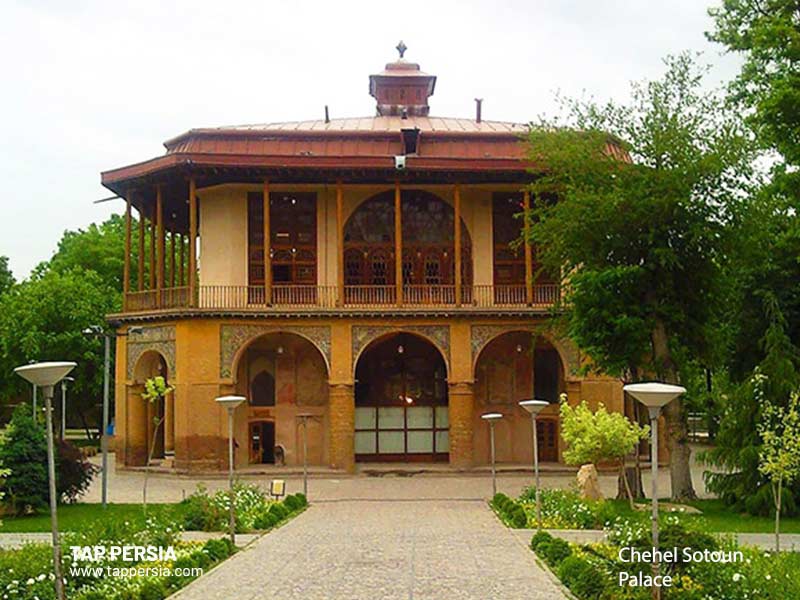 By visiting the Safavid Garden, you can visit the remnants of the Safavid, Afshari, Zandi, and Qajar periods, all together. Some of the buildings in this complex are Naderi Mansion, Pahlavi Mansion, Qajar Mansion, and Chehel Sotoun Palace. This garden has been on Iran’s National Heritage List since March 18, 2008.
By visiting the Safavid Garden, you can visit the remnants of the Safavid, Afshari, Zandi, and Qajar periods, all together. Some of the buildings in this complex are Naderi Mansion, Pahlavi Mansion, Qajar Mansion, and Chehel Sotoun Palace. This garden has been on Iran’s National Heritage List since March 18, 2008.
Amir Gooneh Khan Qajar Qazvini built the Qajar Bath in 1647. He was one of the commanders of Shah Abbas Safavid. Originally they called this bath the Royal Bath. This Hammam is one of the oldest and largest baths in Qazvin. It has an area of about 1045 square meters. There are separate parts for men and women in the bath.
Today, they have turned this bath into an anthropological museum. This historical monument has been on Iran’s National Heritage List since August 1, 2005.
Qazvin Chehel Soton Palace Museum or Shah Tahmasb Kolah Farangi Mansion is one of the most important historical monuments in Qazvin. This amazing structure dates back to the Safavid era. You can find it in the center of the city, in Azadi Square (Sabzeh Maidan). It is said that this building is the only remaining mansion of the royal palaces of Shah Tahmasb’s time. Today, they keep paintings related to the Safavid period in this museum.
This historical monument has been on Iran’s National Heritage List since 1956.
At the end of West Palestine Street in Qazvin, there is Sepahdar Garden Mansion. This mansion is one of the historical houses related to the Qajar period. This house belonged to Mohammad Vali Khan Tonekaboni, nicknamed Sepahdar A’zam. He was one of the famous men of this period. Today this house is an agricultural museum. According to the narrations, they constructed this between the years 1905 and 1910. You can see the construction of this building is inspired by Qazvin Chehelston Palace and the large guest house of Qazvin.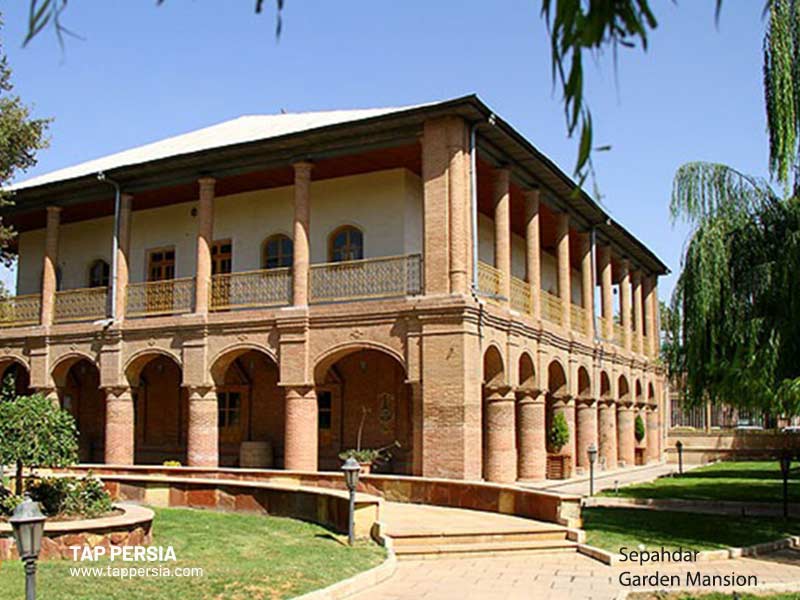
This historical monument has been on Iran’s National Heritage List since March 24, 1998.
Qazvin Municipality or the current Baladiyeh Museum belongs to the Qajar period. You can find it on Qazvin Shahrdari (Municipality) Street. The entrance of the building is two steps higher than the yard and comes in the form of a porch and has 6 columns.
This mansion changed its use to Baladiyeh Museum after the restorations. Among the works on display in this museum are Saddle Horse, Sadr al-Ulama (the first mayor of Qazvin) typewriter and radiograph, administrative correspondence, letters sent by the people, and so on.
This historical monument has been on Iran’s National Heritage List since February 17, 1999. Unfortunately, visiting inside this building is only possible during Nowruz.
5. Qazvin Museum
You can find the spectacular Qazvin Museum on the east side of the Safavid mansion. In this museum, there are precious objects related to different historical periods. Some of the objects on display belong to the third and first millennia BC.
Other objects are related to the Islamic era from the beginning to the contemporary era. Most of these objects are bronze and pottery. From the Islamic period up to the contemporary era, you will face historical doors. The doors on display all belong to the same area. These wooden doors are so charming and eyecatching.
Qazvin traditional gardens are a collection of gardens, which are spread in the southern half of Qazvin city. These traditional gardens are more than a thousand years old and are the green relics of our ancestors in this region.
The area of these gardens is more than 2500 hectares and in the past, they surrounded the city. Because these gardens are irrigated in the traditional way, that is, submerged in water, they call them traditional gardens.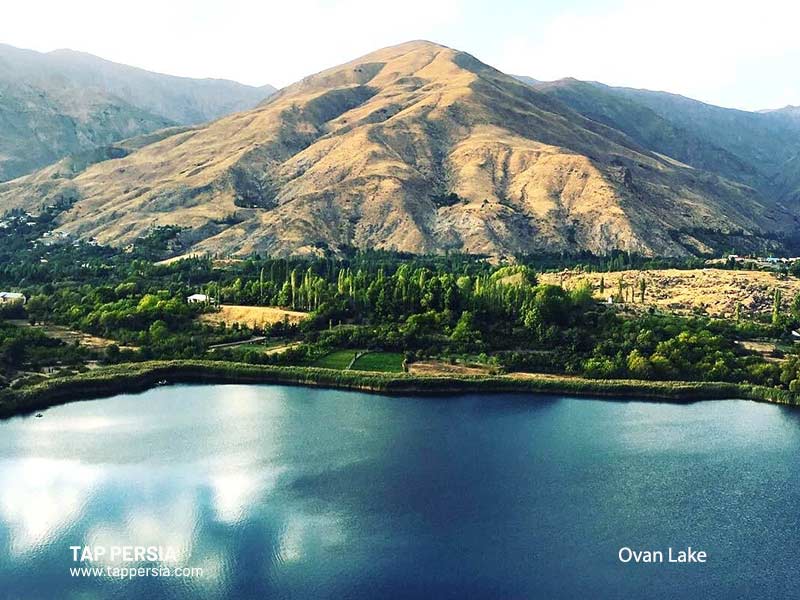
Ovan Lake is one of the pristine natural lakes of Iran in Qazvin province. It shines like a beautiful jewel in the mountainous and pleasant climate of Alamut. Because of the proximity of the lake to Tehran, it is a suitable place for one-day nature tours. Furthermore, it hosts hundreds of domestic and foreign tourists annually.
Have you ever heard of a village in Iran whose people are of European descent and are fluent in languages other than Persian and local Iranian languages? Zargar village is one of the sights of Qazvin where its people speak Romani other than Persian and Turkish. There are many legends and narrations about the origin of the villagers and how these people got close to the capital of Iran, which are very remarkable. They call Zargar Village the strangest village in Iran.
Barajin Forest Park is one of the most popular places in Qazvin. It’s two kilometers north of the city. In this park, you can see the city of Qazvin from above. This forest park, which has been considered a recreation area for the people of Qazvin for a long time, is a suitable place to spend leisure time and enjoy the pleasant weather of the foothills. The flow of the Arnazak River also doubles the beauty of the park.
Garmagalou Canyon consists of two parts, a narrow part and a wide one in the middle. The length of the valley is about 600 meters. There is a river flowing at the bottom of the valley. To get to the valley you need to go to Gazorkhan (or Masoudabad) village.
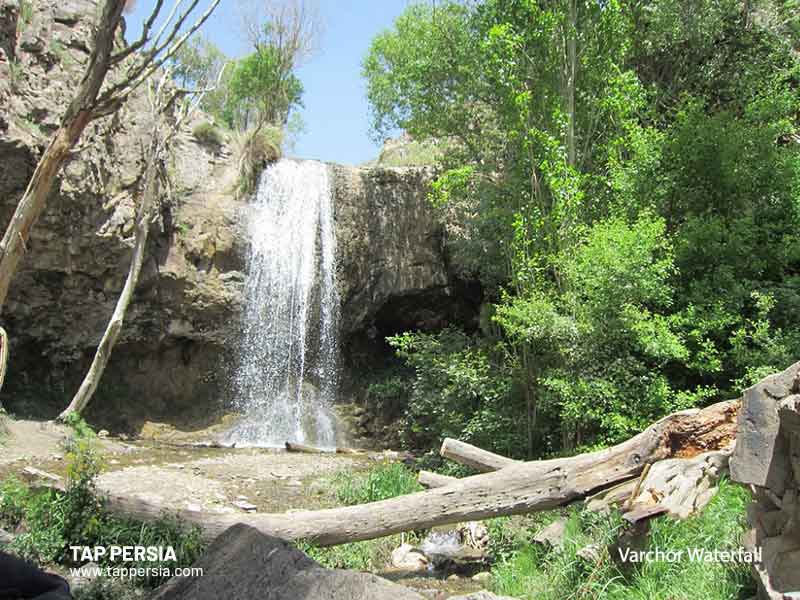
Near Razjerd village, there is Varchor waterfall, one of the sights of Qazvin. This waterfall is located 6 km east of Razjerd village. Its height reaches more than 30 meters and it’s surrounded by huge rocks. The same thing has given special beauty to this waterfall.
Sialan is the name of a mountain whose peak is located on the border of Mazandaran and Qazvin provinces. It is one of the mountaineering destinations and tourist attractions of Qazvin province.
This mountain overlooks the Rudbar region of Alamut from Qazvin province to the south. And on the north side overlooks the Do-Hezar valley of Tonekabon city in Mazandaran province(Iran destinations).
One of the significant constructions of the Safavid era and the sole surviving pavilion of …
The mysterious story of the Alamut fortress, the old man of the Mountains, and his …
Sa’d al-Saltaneh Caravanserai is a structure that dates back to the Qajar era. As you …
Show All
Another gorgeous sight in the Alamut region is Hir village which is 65 kilometers away …
Rice is the most common item in Iranian cuisine. They love rice and use it …
Qazvin is having the biggest sweets collection in Iran. The evening tea served with sweets …
Qazvin is having the biggest sweets collection in Iran. The evening tea served with sweets …